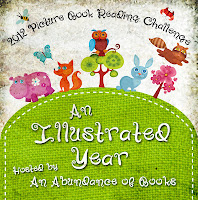That I love books about London!
Image: foyles.co.uk
Catherine Johnson's A Nest of Vipers is a thrilling adventure story set in a lawless and brutal 18th Century London. Young Cato Hopkins is being brought up by a gang of "coney catchers", confidence tricksters overseen by Mother Hopkins, who claims that she bought Cato from Newgate Gaol for a few pennies. The Hopkins "family" (Addy, who can pass as a boy and part fools from their money at cards; beautiful Bella, who has been parted from lovelorn young aristocrats at the altar- for a price; escaped slave Sam and Cato, who has been sold into slavery, but can crack any lock going, especially if there is something valuable on the other side of the lock) are famous among the London Underworld, and live at the Nest of Vipers pub east of Drury Lane, London. They pride themselves on only conning those deserving the con, especially slave traders.
But things are getting too hot for them in London, and Mother Hopkins is ageing. She has a dream to retire to Bath. Bella wants to marry Jack, who with Sam is in the Sedan chair business, and want to go straight. And surely Addy can't pass as a convincing boy much longer? In order to buy a house, Mother Hopkins plans one last con trick. But when she involves proud Quarmy, the son of a West African king, his unfamiliarity with their cons and his love-sickness for his former tutor's daughter may prove the family's undoing...
I thoroughly enjoyed this book. It is framed at the beginning and the end with Cato in Newgate, dictating his story to the Ordinary, the gaol's chaplain. More detail about Ordinary's accounts can be found on the Old Bailey Online website. The historical detail is rich: accounts of London pubs, coffee shops, pie shops and the houses of the wealthy is finely drawn, and never overwhelms the pot, which rushes along like an 18th Century episode of Hustle. The use of thieve's cant also enriches the story (as it does, for example, in Georgette Heyer) and since Cato is often reproved for using it, it adds to the authenticity but doesn't make the dialogue less comprehensible for young readers. Like the best sorts of historical fiction, we are able to enter the world of a young Black boy in 18th Century London, learning more about his times and also about why our world is the way it is. Highly recommended for 9+.
I reviewed Catherine Johnson's Brave New Girl here. She's a fabulous writer; make sure you read her in 2013!



.jpg)














.jpg)














